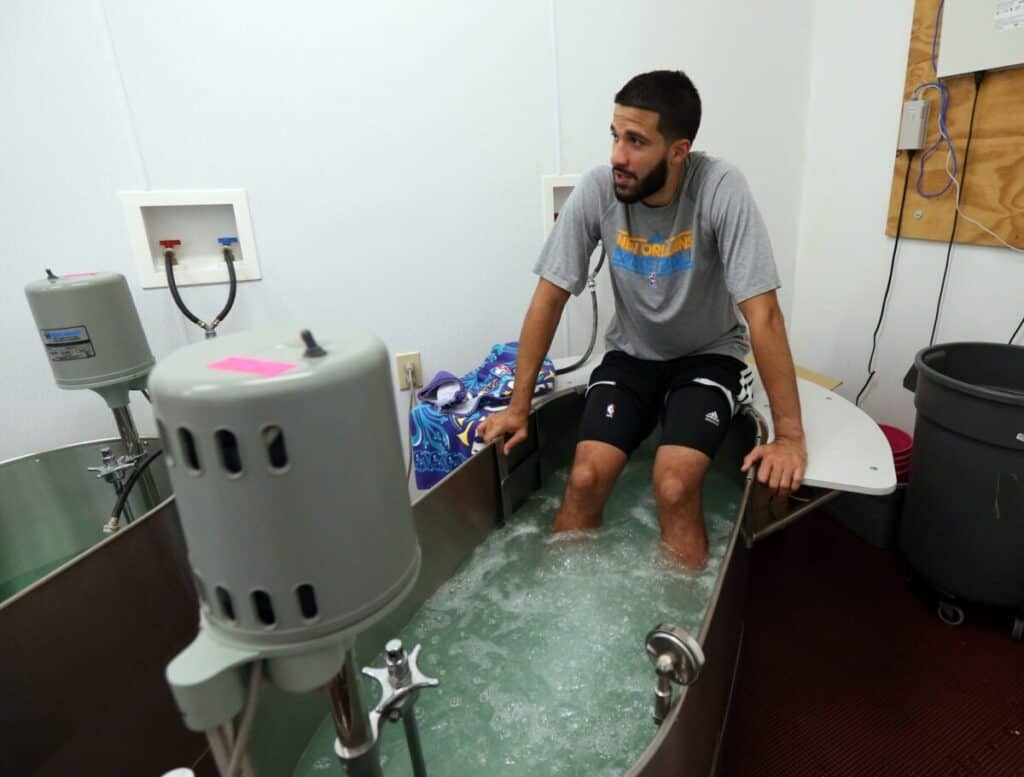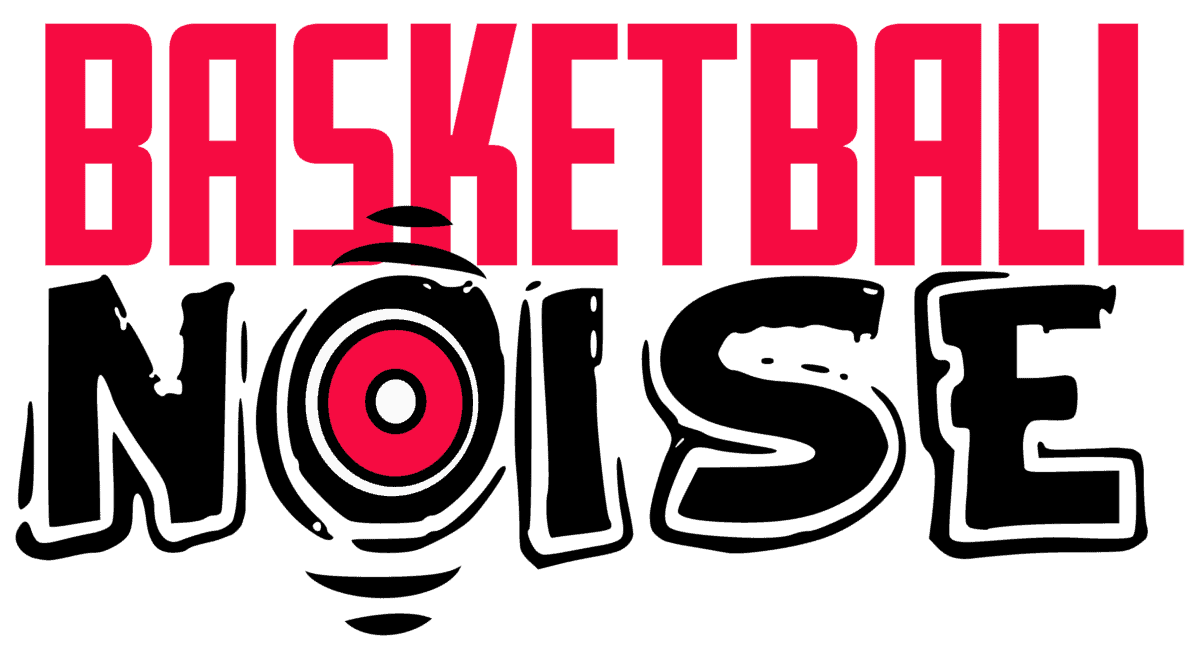Lots of people look at NBA players, their fashion styles and salaries and confuse all that with glamorous lifestyle. That may be true for some, but the league has evolved to a point that it’s incredibly popular and the players’ duties have therefore expended way off the court with scheduled team meetings, media conferences and numerous other protocols. The other massive change is the added diversity of nationalities and personalities in the league, as players from all over the world from adolescents to 20+ year veterans have to coexist in a team culture while being obliged to follow a number of team and league rules. So what comes after the final buzzer sounds and players leave for their dressing rooms.
What do NBA players do after games? Shower and then enter ice baths in order to regenerate their body for the next game. The players and coach will also discuss what happened in the game. The NBA players then have to complete their media obligations.
We have taken an in depth look at what players do after the game. This has obviously evolved over the years and there is now a bigger emphasis on recovery for NBA players due to their hectic schedules and players wanting to have longevity in their careers.
What do NBA players do immediately after games?
In a schedule so dense that it only can be compared to baseball, NBA players have to focus entirely on taking care of their body. It is well documented how much money and effort LeBron James spends to perfect his physical attributes. That way, we are seeing more and more players prolonging their careers and having a real impact on their respective teams even in their late 30s. After the game is over, the players are not only tired from all the expended calories on the floor, but also travelling and pre-game obligations. Therefore, immediately after taking a shower, they hop into ice baths and cryotherapy chambers to regenerate their body and relax after a stressful day.
Ice bath is a technique that’s been used for quite some time, even though many studies have questioned its’ physical impact on the body. Despite that, many players reportedly use it not for physical, but mainly psychological feeling they get, as it gets them to feel like they are instantly in less pain and more relaxed. On the other hand, the cryotherapy chamber is a proven method that uses the same premise as ice baths, but takes it to the next level. The process is based on using nitrogen to lower the temperature of the body and help reduce swelling and inflammation. There are some other activities which players practice after an intense game, the likes of massages, hydration, compression tights and active recovery exercises. The importance of these activities is something players are getting more and more aware of, and it is visible how today’s stars are physically superior to those of the old days.

When they all get back together in the locker room, they go over what happened in the game with the coach for approximately 15 minutes to half an hour and then coaches and star players leave for press conferences and other media obligations. After all the necessary media and body routines are completed, usually the whole team gathers so that they can have dinner together. That is not a rule but it is definitely something which every team tends to stick to for chemistry and gelling purposes. Their meals usually involve high amounts of carbs and protein which are beneficial in helping the body repair muscles and restore some energy left on the court. Depending on the location of the next game, they either go home or take their transportation to the next city.
What are NBA players’ media obligations?
Basketball is a fast-growing sport, which has more and more media coverage as a result. One huge duty all players have is to represent their organization in the best way possible. It is their contractual obligation to be available to the media at all times, which can get pretty tiresome for some of the less patient ones. They have to be smart enough not to say anything controversial while providing media with the answers they require. They also have to be aware that a lot of times, members of the media are there to push their narrative regardless of how true it is and what answers the players provide. Anything they say can be turned into a topic on various shows airing on ESPN and FOX sports, so they usually opt for straightforward and routine answers in which they don’t let too many information out.
The NBA receives a large chunk of its money from television companies, which want as much coverage they can get in return for their invested money. As a result of that, NBA has some rules set for players when it comes to the media. After the end of the game, they have to be available to answer questions for at least 45 minutes. The league introduced some changes in this field in the 2013/14 season and loosened the amount of time required of the players to be available on game days. Also, the injured players are now obliged to talk to the media at least once while sidelined. NBA senior vice president Tim Frank commented that even with the time shortened, NBA players are still among the most accessible in sports.
Despite these regulations, the relationship between players and media has always been a turbulent one. That has especially been a case in recent times when a couple of star players have shown continuous disregard for the questions and the ones asking them. Feeling that their privacy was attacked, Kevin Durant, Kyrie Irving and Russell Westbrook to name a few, lashed out on more than a couple of occasions, giving non-answers or getting personal with the reporters. In a league getting more and more popular, this might be the time to draw a clearer line between media obligations and the privacy of players.
Do NBA players drive to games?
Not counting the playoffs, during regular season alone, all 30 teams have 41 home and 41 away games on one of the most hectic schedules in sport. Having that in mind, it comes as no surprise the fact that travelling is a large part of being a professional basketball player, as they pass more than 40.000 miles on average during just the regular season. Many international players find all this travelling very hard in the beginning, as they quickly find out that long flights are something they have to deal with at least once a week. Even the ones who knew what they were getting into were taken by surprise once they actually started living the NBA life:
“You grow up knowing about the 82-game schedule in the NBA,” said the Los Angeles Lakers point guard Quinn Cook. “But it’s totally different when you experience the difficulty of that schedule yourself.”
Over 7 months, there are a little over 3 games a week being played across different time zones and altitudes, so the effects of jet lag and constant travelling cannot be understated. Many studies have proven several negative ways in which travelling affects performance and recovery. Not only does all that sitting result in stiff muscles and joints which prevent quick recovery, but studies also show that players tend to suffer more injuries during the away games.

When it comes to home games, players usually drive to the arena themselves. Depending on which city they play, some might have to take driving services or subway. Kobe Bryant famously used a helicopter from his home in Orange County to Staples Center. Reigning MVP, Giannis Antetokounmpo even ran to one of the home games during his rookie season, while Lebron used to bike to games while he was with the Miami Heat.
What do basketball players eat after games?
As I said above, for those players who are aware of how important nutrition is, dinner consists of some type of carb-protein mix. Steve Nash was famous for being well organized in all aspects of his career, one of which was his diet. On the other hand, Charles Barkley was eating multiple pizzas a day and Dwight Howard opted for candy and soda. Some players have made diet and nutrition the key focus point and have been in perfect shape for most of their careers, while some rely solely on their talent and never quite reach their full potential. However, if you count out the differences in commitment and awareness, there are some core principles pretty much every player sticks to.

First and foremost, it is important to eat as much organic food as possible, while avoiding pastas, bread and other processed food. It’s not so much what they eat, but what they should avoid to eat.
The official nutritionist of the NBA coaches association, Stacy Goldberg, had this to say about the changes in diet and nutrition trends and how the league is dealing with it:
“These days, people have different dietary lifestyles. We’re working with a lot more players and coaches who are dairy-free, gluten-free, vegan and other approaches to their diets. That presents a challenge for nutritionists, strength coaches or anybody who’s responsible for sourcing in the NBA setting, because it’s overwhelming to figure out what’s the right choice. How do I find it? How do I know if it’s healthy? That’s my job. We help these teams easily find the right products and information that can meet the needs of their teams. I spend most of my time working with strength coaches, helping them to find the right nutritional products that are great, performance-based fuels for their players.”
